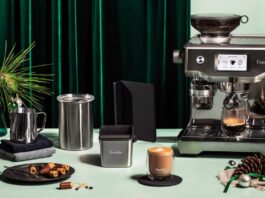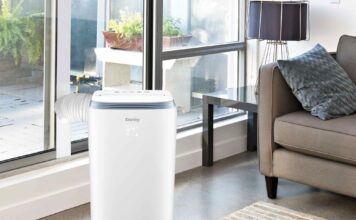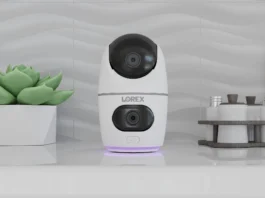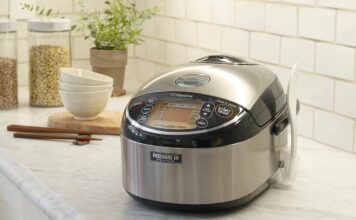
Both latte and cappuccino are popular coffee beverages that have their distinct characteristics, but they often get confused with each other. The primary difference lies in their composition and milk-to-coffee ratio. Different coffee making tools such as the espresso maker, cappuccino machine, and latte machine, play a crucial role in defining these beverages. Find out what exactly defines each drink and what you need to make them perfectly at home.
Different cultures enjoy latte and cappuccino in unique ways. The influence of coffee and espresso machines in global coffee culture is evident, as they are tools that enable people to enjoy these beverages across the world. Whether it’s a relaxed latte in a Canadian café or a quick cappuccino in an Italian bar, the worldwide appeal of these drinks is undeniable and each has a base recipe that doesn’t change.
What is a latte?
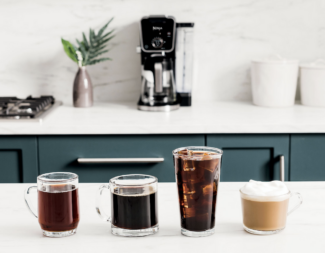
A latte is a coffee drink made with espresso and steamed milk. It is crafted using a latte maker or espresso machine, focusing on a higher ratio of milk to coffee. Lattes are often enjoyed for their creamy, mild flavor, which offers a less intense coffee taste. A milk frother is used to create a small amount of foam on the top, giving the latte its signature smooth texture.
What is a cappuccino?
A cappuccino is a coffee beverage consisting of equal parts espresso, steamed milk, and foam. This drink is created with a multi-use coffee machine or cappuccino machine, offering a balanced blend of its components. The cappuccino stands out for its rich, strong espresso flavor, complemented by the foam created using a milk frother. The higher foam content leads to a more robust and intense taste, distinguishing it from a latte.
Exploring espresso
Espresso is the heart of latte and cappuccino. It refers to both a brewing method and a type of coffee. Espresso is made using ground coffee beans, hot water, and lots of pressure to produce a concentrated coffee beverage. An automatic espresso machine is often preferred for convenience, while a semi-automatic espresso machine offers more control. For traditional coffee lovers, a manual espresso machine might be the tool of choice, and pod espresso machines offer a quick option for those in a hurry.
Tips to make the best latte and cappucino at home
1. Composition and taste: understand the differences
Milk ratios in latte and cappuccino are the core of what separates each drink from the other. Lattes have more steamed milk, resulting in a milder flavour, while cappuccinos offer a stronger espresso taste due to the balanced ratio of espresso, milk, and foam. These distinctions in composition lead to unique flavor profiles and taste experiences.
2. Coffee machine: automate the process
Making a latte or cappuccino at home can be a delightful experience. Many home baristas opt for automatic or semi-automatic espresso machines to make the process easier and take the guesswork out of making the perfect cup. These machines often come with a step-by-step guide, which is helpful for beginners and allows coffee enthusiasts to personalize their daily coffee ritual.
3. Coffee grinder: fresh grounds, fresh flavour
A coffee grinder is necessary for both beverages, with the grind size significantly impacting the flavor and consistency. Generally, a finer grind is used for espresso-based drinks, but subtle variations may exist based on personal preferences and the specific coffee grinder being used.
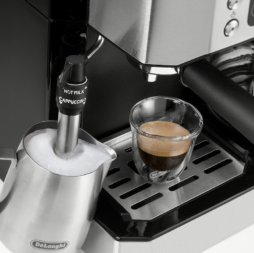
4. Milk frother: achieving the perfect texture
The texture of milk plays a vital role in distinguishing lattes from cappuccinos. A milk frother can define latte and cappuccino by creating varying foam levels. While cappuccinos require more foam, lattes call for creamier milk. Techniques for frothing differ between the two drinks, with lattes requiring less aeration and cappuccinos requiring more.
5. Maintenance tips for espresso machines and accessories
Regular care is crucial for a long-lasting latte maker and cappuccino maker. Cleaning espresso machines, milk frothers, and coffee grinders regularly helps to maintain quality and flavor. Following the manufacturer’s instructions ensures that your equipment stays in optimal condition and that your latte or cappuccino always tastes great.

The world of coffee is rich and diverse, and understanding the differences between latte and cappuccino can help make the enjoyment of each beverage unique. From espresso machines to milk frothers, the tools and techniques used to craft these coffee drinks play a vital role in defining their characteristics. Whether you prefer the balance of a cappuccino or the creaminess of a latte, understanding their distinctions and having the right tools will result in flavourful and lip-smacking cups of coffee.
This article was drafted using AI technology and then reviewed, fact-checked, and revised by a member of our editorial team.






